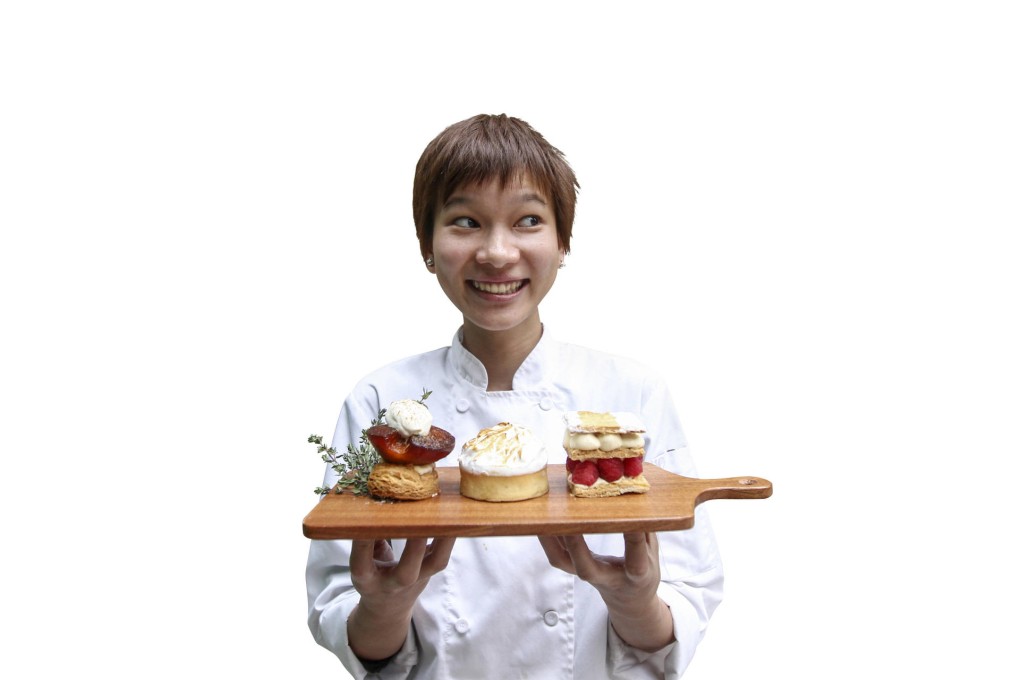Nosh's pastry chef offers French classics with a Japanese twist

It is just a couple of months since Nosh opened its doors, adding to the foodie transformation of Upper Station Street in Sheung Wan, and it's already hard to find a table for weekend brunch.
The inside-outside seating is perfect for soaking up the winter sun and the airy interior is dominated by a mural by local illustrator Lee Chi-ching. But walk in at the right time of day and your attention will be monopolised by the pastries.
Lined up in the glass cabinet they gleam like ornaments. For this venue that can barely seat 30 has its own pastry chef, and these little plates of perfection are created daily by chef Aki Yamamoto.
The tall, slim co-manager of Nosh, originally from Tokyo, emerges from her tiny kitchen bearing a tray of lemon tarts - her signature dish. Her excitement at having created another batch of goodies for her customers is evident as she carefully arranges them.
A self-confessed perfectionist who has always loved cooking, she mastered fried rice at the age of six. Her parents' jobs took her to Thailand and China, while she has spent her adult life in the US and Italy, as well as Japan. She soaked up the culinary cultures of wherever she was living, while teaching herself traditional Japanese dishes at home.
At first, she became an art student, but was soon tempted to take a Cordon Bleu course. That was delayed because of 2011's Fukushima earthquake, so she bought a Cordon Bleu book.